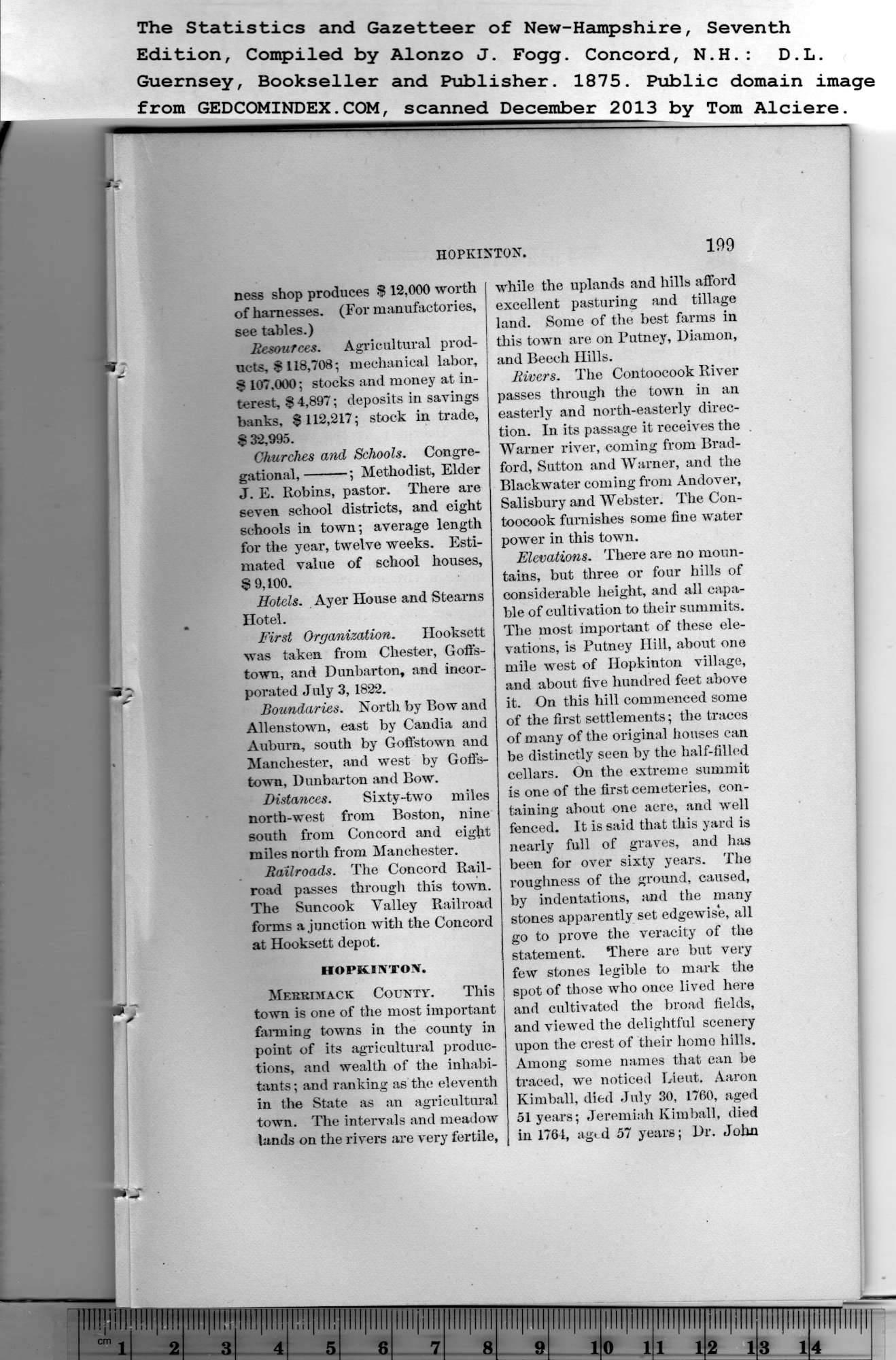|
ness shop produces $ 12,000 worth
of harnesses. (For manufactories,
see tables.)
Resources. Agricultural prod-
ucts, $ 118,708-, mechanical labor,
$ 107,000; stocks and money at in-
terest, $ 4,897; deposits in savings
banks, $112,217; stock in trade,
$ 32,995.
Churches and Schools. Congre-
gational, ; Methodist, Elder
J. E. Robins, pastor. There are
seven school districts, and eight
schools in town; average length
for the year, twelve weeks. Esti-
mated value of school houses,
$9,100.
Hotels. Ayer House and Stearns
Hotel.
First Organization. Hooksett
was taken from Chester, Goffs-
town, and Dunbarton, and incor-
porated July 3, 1822.
Boundaries. North by Bow and
Allenstown, east by Candia and
Auburn, south by Goffstown and
Manchester, and west by Goffs-
town, Dunbarton and Bow.
Distances. Sixty-two miles
north-west from Boston, nine
south from Concord and eight
miles north from Manchester.
Railroads. The Concord Rail-
road passes through this town.
The Suncook Valley Railroad
forms a junction with the Concord
at Hooksett depot.
HOPKINTON.
Merrimack County. This
town is one of the most important
fanning towns in the county in
point of its agricultural produc-
tions, and wealth of the inhabi-
tants ; and ranking as the eleventh
in the State as an agricultural
town. The intervals and meadow
lands on the rivers are very fertile,
while the uplands and hills afford
excellent pasturing and tillage
land. Some of the best farms in
this town are on Putney, Diamon,
and Beech Hills. |
Rivers. The Contoocook River
passes through the town in an
easterly and north-easterly direc-
tion. In its passage it receives the
Warner river, coming from Brad-
ford, Sutton and Warner, and the
Blackwater coming from Andover,
Salisbury and Webster. The Con-
toocook furnishes some fine water
power in this town.
Elevations. There are no moun-
tains, but three or four hills of
considerable height, and all capa-
ble of cultivation to their summits.
The most important of these ele-
vations, is Putney Hill, about one
mile west of Iiopkinton village,
and about five hundred feet above
it. On this hill commenced some
of the first settlements; the traces
of many of the original houses can
be distinctly seen by the half-filled
cellars. On the extreme summit
is one of the first cemeteries, con-
taining about one acre, and well
fenced. It is said that this yard is
nearly full of graves, and has
been for over sixty years. The
roughness of the ground, caused,
by indentations, and the many
stones apparently set edgewise, all
go to prove the veracity of the
statement. There are but very
few stones legible to mark the
spot of those who once lived here
and cultivated the broad fields,
and viewed the delightful scenery
upon the crest of their homo hills.
Among some names that can be
traced, we noticed Lieut. Aaron
Kimball, died July 30, 1760, aged
51 years; Jeremiah Kimball, died
in 1764, agtd 57 years; Dr. John |
